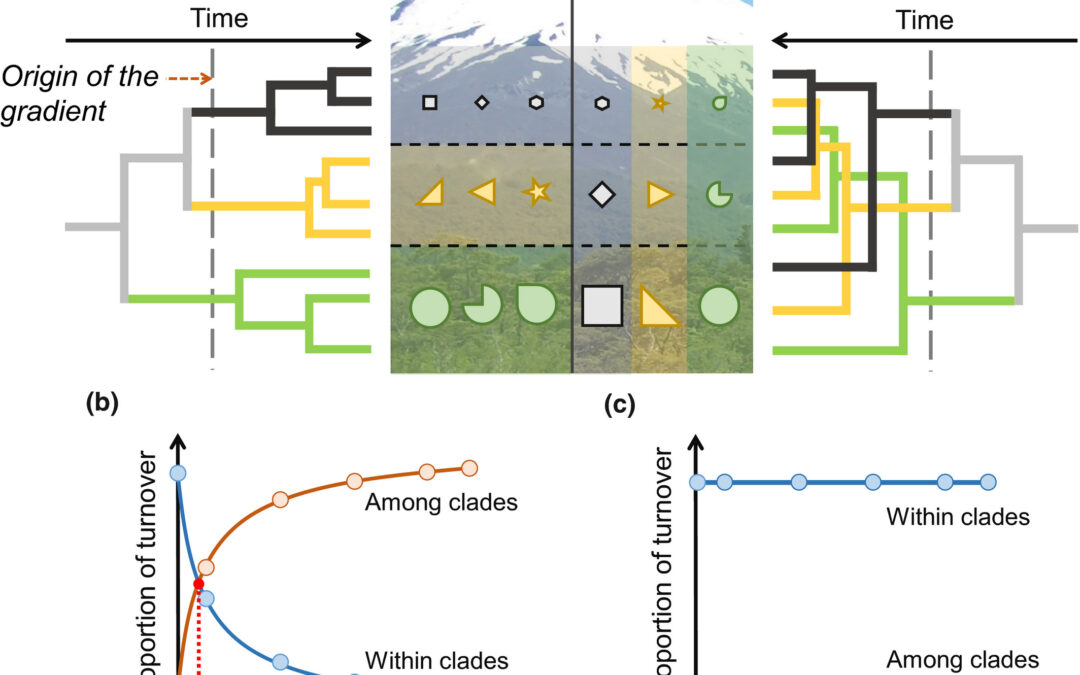Jonathan, William, and colleagues in The Madidi Project and Andes Biodiversity and Ecosystem Research Group (ABERG) Project publish a paper in New Phytologist titled “The evolutionary assembly of forest communities along environmental gradients: recent diversification or sorting of pre-adapted clades?”. Short answer: Sorting of pre-adapted clades. Thanks to Alex Linan and Sebastián Tello for leading this project!
Figure: Conceptual models to explain the assembly of regional biotas after the emergence of new environments. (a) The distributions of species (symbols), traits (sizes) and clades (colors) along an elevational gradient as expected by the immigration and ecological sorting of pre-adapted clades (ISPC; left) and recent adaptive diversification (RAD; right) hypotheses. The gray broken line marks the emergence of the novel environmental conditions due to mountain uplift. The phylogeny describes the evolutionary relationships among species in the target communities, and the colors indicate different clades of pre- Andean origin (clades that diverged before the uplift of the mountain). ISPC and RAD predict contrasting spatial patterns in how species turnover is partitioned into within- and among-clade components. (b) If ISPC is the dominant scenario of community assembly, the among-clade component will increase rapidly as differences in elevation between plots increase, while the within-clade component will decrease. (c) If RAD is the dominant scenario, the within-clade component will be greater than the among-clade component regardless of elevational distance (Figure credit: Sebastián Tello)

